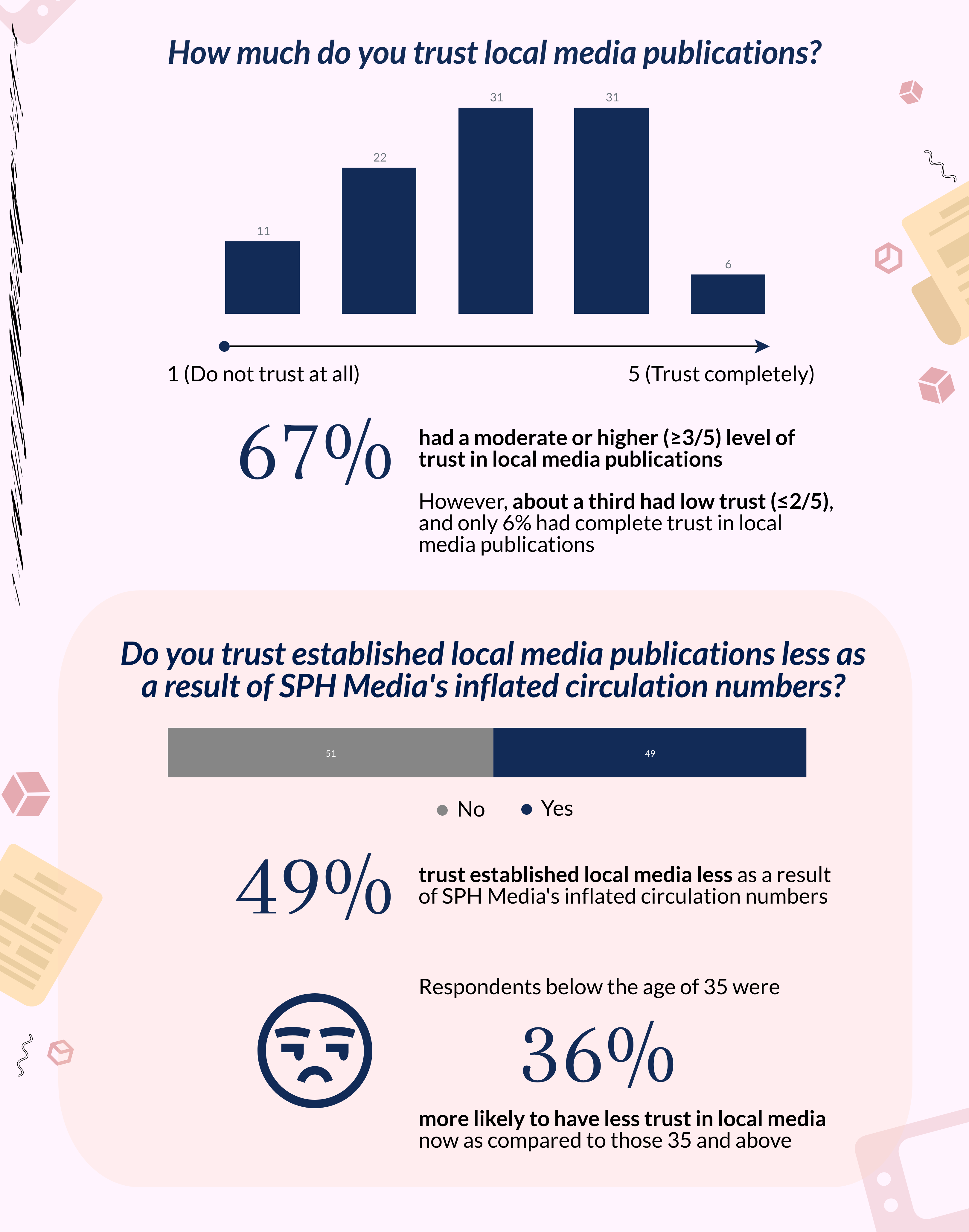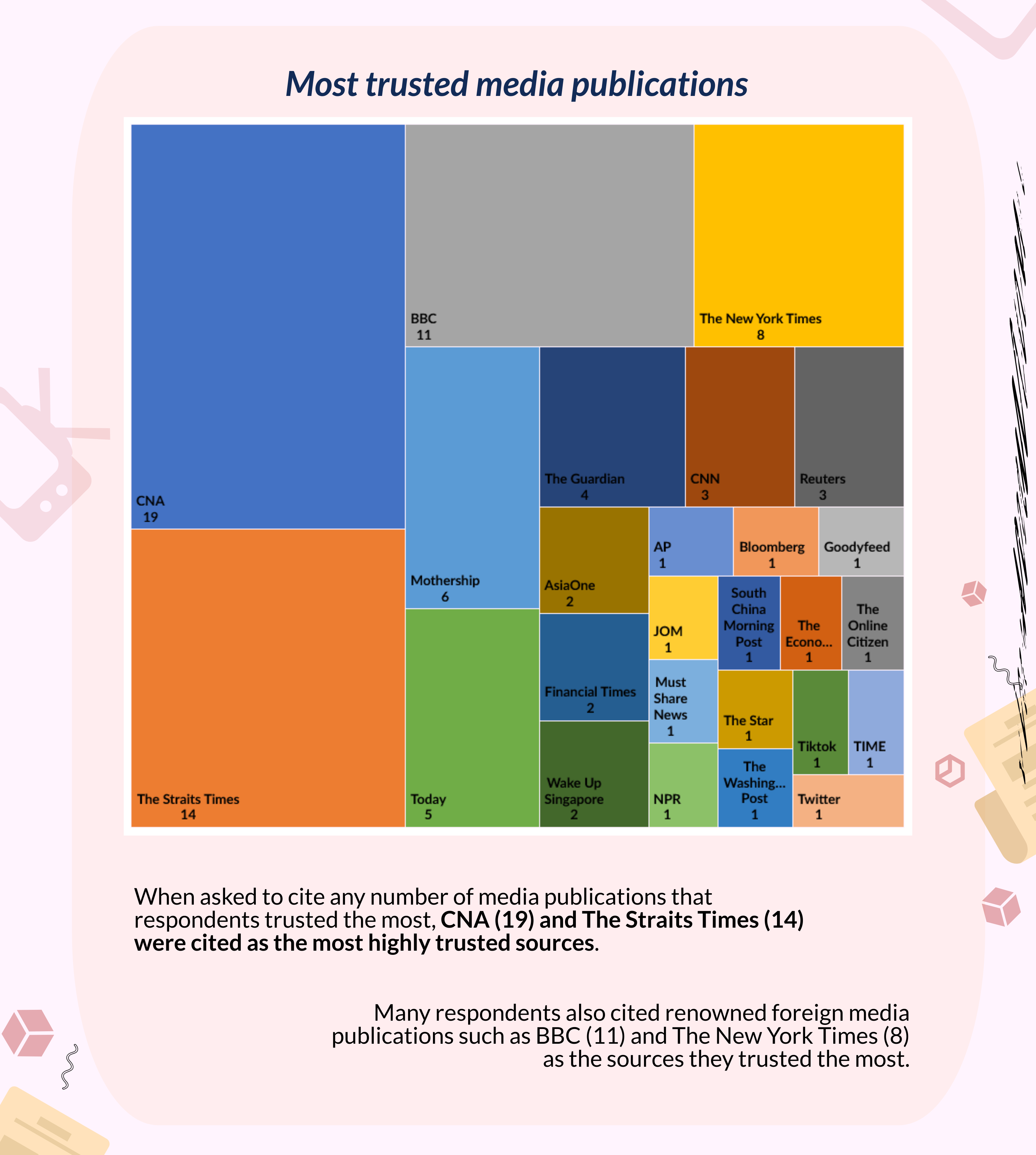 On 9 January, it was reported that SPH Media was found to have inflated the daily circulation numbers of its publications by between 85,000 to 95,000, which represents about 10 to 12% of daily average circulation.
On 9 January, it was reported that SPH Media was found to have inflated the daily circulation numbers of its publications by between 85,000 to 95,000, which represents about 10 to 12% of daily average circulation.
Circulation numbers are important for determining how much publications can charge advertisers. Singapore’s stock market regulator is investigating whether the inflation of circulation numbers took place when SPH Media, as part of Singapore Press Holdings, was listed on the Singapore stock market (SGX). The Ministry of Communications and Information (MCI) is also reviewing the matter.
SPH Media publishes The Straits Times, The Business Times, Lianhe Zaobao, Shin Min Daily News, Berita Harian and Tamil Murasu.
Wake Up Singapore, the alternative news media site that broke the story, added that at least three senior executives were made to leave SPH Media following the circulation discrepancies.
SPH Media is receiving significant government funding. In 2022, Minister for Communications and Information Josephine Teo said that SPH Media would receive up to S$900 million over the next five years to help it make ‘essential investments that move it decisively into the digital era’. This comes amidst a decline in readership of print media in Singapore and a migration to digital media.
On 7 February, Minister Teo remarked in Parliament that the government would not change its decision to fund SPH Media as ‘the reasons to help develop local newsrooms remain valid’. She also urged Parliament to not ‘prejudge the outcome’ until SPH Media’s audit and risk committee finished its investigations into the issue.
Given that the breach of trust by SPH Media coincides with substantial publicly funded investment by the government into local media, we surveyed 101 Singapore residents to measure their trust in media, and how it may have shifted as a result of this affair.
Moderate Trust Somewhat Eroded

Three-quarters (75%) of respondents had heard about SPH Media’s inflation of its circulation numbers.

Overall, respondents had a moderate level of trust in local media publications. Two-thirds (67%) of respondents had a moderate or higher level of trust in local media.
The level of trust in local media, however, was hampered by a third (33%) of the population who had low trust in local media. In addition, only a small number of respondents indicated that they had complete trust (6%) in local media publications.
Respondents below the age of 35, who comprised 34% of our sample, were 36% more likely to have lowered trust in local media as compared to those 35 and above.
Readership Retained but Alternatives Emerging

Despite the moderate levels of trust in local media, more respondents reported using established local media (76%) as a news source than social media (68%), foreign media (43%) or alternative media (40%). This may suggest that local media publications still hold some utility for large sections of the public or that satisfactory alternatives have not yet been fully adopted.
Social media was revealed to be a close second to local media as a news source for respondents, which may raise some alarms for the possibility of the spread of disinformation. It also indicates the need for traditional media to adopt new digital channels successfully to retain readership in the current generation.
Though alternative media was the least popular news source, respondents below the age of 35 were 61% more likely to use it as compared to those 35 and above, revealing its growing popularity.

A similar proportion of respondents said that they would decrease use of local media (30%), increase use of social media (29%), increase use of foreign media (26%) and increase use of alternative media (28%) as a result of the SPH Media affair.
Overall, 62% of respondents indicated that they would chase their news consumption habits in at least one of the ways listed. Respondents below the age of 35 were 30% more likely to change their news consumption habits as compared to those 35 and above.
Local Media Still More Recognised, Trusted for Public

CNA and The Straits Times appear to retain a large level of brand trust for media amongst the Singaporean public, even if the trust in local media has been damaged somewhat as a result of the SPH Media affair.
These major local publications are followed by the renowned foreign media BBC and The New York Times. While there seems to be recognition that these foreign media publications are trustworthy, this does not appear to translate into readership in the same way as it does for local media publications.
While alternative media publications such as Wake Up Singapore and The Online Citizen receive a few mentions, it appears that only small sections of society consider alternative media the most trustworthy sources. Another reason for the small number of mentions could also be the lack of familiarity with the publications due to their smaller reach and shorter histories.
Overall, it appears that there has been moderate damage to trust in established local media publications as a result of the SPH Media affair, but that local media publications remain dominant as news sources for the public.
Changing news consumption habits as a result of this event may accelerate the trend towards social media in particular, which encourages the splintering and dilution of the news landscape with less reliable sources.
Younger respondents were less tolerant of the affair, suggesting their trust was more affected and they were more likely to change their habits as a result. While alternative news remains precisely that, an alternative some distance away from the mainstream, it does appear that they will accrue greater acceptance if the trends continue of newer generations of respondents adopting these sources.

















